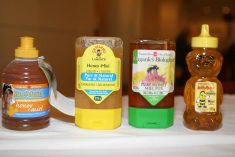A number of influential newspapers in India are telling their readers that imported Canadian lentils are poisonous.
The stories stem from an Oct. 12 order issued by the Food Safety and Standards Authority of India (FSSAI).
The order instructs FSSAI officers to test imported pulses for the presence of glyphosate.
“There is a possibility of higher level of residues of (the) herbicide glyphosate in pulses, thereby adversely affecting the health of consumers,” the FSSAI stated in its order.
Gord Bacon, chief executive officer of Pulse Canada, was taken aback by that statement.
Read Also

First annual Ag in Motion Junior Cattle Show kicks off with a bang
Ag in Motion 2025 had its first annual junior cattle show on July 15. The show hosted more than 20…
“I was surprised to see that language,” he said.
Bacon has seen nothing to suggest Canadian pulse shipments exceed India’s newly established maximum residue limits.
Later on in the government order India says it will be adopting the Codex MRLs of two parts per million for beans and five ppm for peas and lentils.
The order was misinterpreted by a variety of media outlets. A typical headline was one like the following that appeared in The Times of India, a newspaper that reaches more than 271 million online users.
“The FSSAI Claims That Your Moong & Masoor Dals Are Poisonous!”
The story goes on to say that dals made from imported lentils are “seriously laced with toxic ingredients” and that the FSSAI has warned consumers to stop eating dals daily.
The Times story says laboratory testing has found high traces of glyphosate, which farmers use to “get rid of rodents and weeds.”
It said tests of thousands of pulse samples conducted by the Canadian Food Inspection Agency found that glyphosate residue was “extremely high by any standards.”
That was not the finding of a 2015-16 study by the CFIA, which was the last big glyphosate study conducted by the agency.
It tested 869 samples of peas, lentils and beans and found glyphosate residue on 47.4 percent of the samples.
But only 0.6 percent of the samples had residues above Canada’s MRLs of four p.p.m. for beans and lentils and five p.p.m. for peas.
Brian Clancey, editor of the Stat Publishing newsletter, questioned the integrity of the Indian newspapers given those results.
“The facts make the headlines look absurd and reflect an abject failure by editors and journalists to check facts instead of reporting as fact the statements of people whose only desire is to convince people to eat the kinds of foods they like,” he wrote in a recent article.
Bacon agreed that India’s newspapers were “taking liberties.”
“They’re not backing up statements with analysis or references as to whom is being quoted,” he said.


















